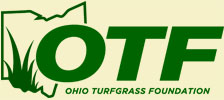Nurturing Northeast Ohio Grasses in Drought: Effective Watering and Mowing Practices
Cool-season grasses, such as Kentucky bluegrass, tall fescue, and perennial ryegrass, are popular choices for lawns in regions with moderate climates like Ohio. However, these grasses can face challenges during drought periods. In this blog post, we’ll explore the importance of proper watering techniques and mowing procedures for cool-season grasses, helping you maintain a healthy lawn even in drought conditions.
Watering Techniques for Cool-Season Grasses: Watering is a crucial aspect of lawn care, especially during drought periods. However, it’s important to water efficiently to avoid waste and promote the growth of deep, resilient roots.
a. Deep and Infrequent Watering: Rather than frequent shallow watering, focus on deep watering sessions. This encourages cool-season grasses to develop deeper root systems, which enhance their ability to withstand drought stress. Watering deeply once or twice a week is generally sufficient for cool-season grasses. Aim for about .5 to 1 inch inch of water per week for a green lawn, or a half inch every third week to keep crowns alive. Grass without water for three to four weeks my need to consider a fall overseeding for full recovery.
b. Water in the Early Morning: Watering your lawn in the early morning, before sunrise, is advantageous for several reasons. The cooler temperatures reduce water loss through evaporation, ensuring more water reaches the grass roots. Additionally, morning watering allows the grass blades to dry before evening, minimizing the risk of disease development.
c. Utilize Irrigation Techniques: Consider using irrigation techniques that optimize water efficiency, such as soaker hoses or drip irrigation systems. These methods deliver water directly to the soil, minimizing waste due to runoff or evaporation. If you use sprinklers, ensure they are properly adjusted to avoid watering sidewalks or driveways.
d. Monitor Soil Moisture: Regularly check the moisture level of your lawn’s soil to determine when watering is necessary. Insert a screwdriver or soil moisture meter into the ground. If it goes in easily and the soil is moist, you can delay watering. However, if the soil is dry and the grass shows signs of stress, it’s time to water.
Mowing Procedures for Cool-Season Grasses: Proper mowing techniques are essential for maintaining cool-season grasses during drought periods. Mowing too low can weaken the grass and make it more susceptible to stress.
a. Raise the Mower Height: Set your mower to a higher cutting height to ensure the grass blades provide shade for the soil. Taller grass helps reduce water loss through evaporation and promotes deeper root growth. For cool-season grasses, a general rule is to maintain a height of around 3.5 to 4 inches. The higher the better.
b. Follow the “One-Third Rule”: Avoid removing more than one-third of the grass blade’s length in a single mowing session. Cutting off too much at once can stress the grass and hinder its ability to recover. Instead, mow more frequently if needed to maintain the recommended height.
c. Keep Mower Blades Sharp: Dull mower blades can tear the grass, leading to moisture loss and potential disease susceptibility. Regularly sharpen your mower blades to ensure clean cuts, which promote healthier growth and reduce stress on the grass during drought.
d. Leave Grass Clippings: Unless the lawn is excessively long, leaving grass clippings on the lawn after mowing can provide additional moisture and nutrients. As the clippings decompose, they release nitrogen back into the soil, acting as a natural fertilizer for the grass.
Implementing Proper Fertilization: Fertilization plays a crucial role in maintaining a healthy lawn, even during drought periods. Applying a slow-release or organic fertilizer in the allows the grass to store nutrients, resulting in improved tolerance to drought stress. Proper fertilization allows the grass to recover during rainfall events and helps prevent long term lawn damage.
Proper watering techniques, mowing procedures and fertilization are vital for the health and resilience of cool-season grasses during drought periods.





